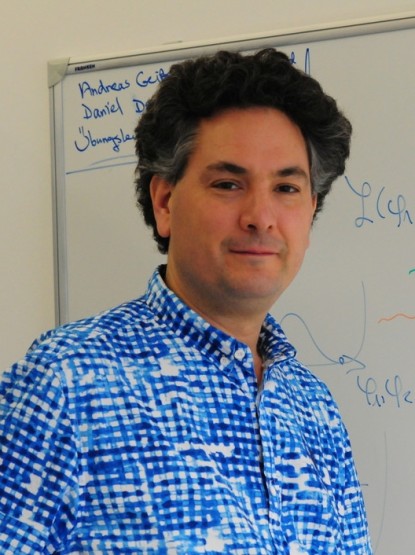The group of Prof. Guy Moore works in the field of Quantum Chromodynamics (QCD), the theory of quarks (the matter particles), gluons (the “force carriers”), and their inter?actions. Quarks are fundamental particles and (almost) always bound together by the strong interaction, which is mediated by the gluons, to form all composite hadrons such as the proton, neutron or pion. Thus, quarks and gluons also make up the fundamental constituents of all atomic nuclei.
QCD describes nature at the length scale of the strong interaction, about 10−15 m (and below), which is also around the radius of protons and neutrons. Compare that with the length scale of typical atomic nuclei and atoms, which is around 10−14 m and 10−10 m, respectively.
In our group, we investigate how QCD behaves under extreme conditions, for example very high temperatures above 1012 K. Such conditions occurred in the early stages of the universe in the first 10−6 s after the Big Bang, and they can be reproduced experimentally in the collisions of heavy ions, for example at the Large Hadron Collider at CERN or the Relativistic Heavy-Ion Collider in Brookhaven. At such temperatures the bound-together quarks are separated and form a dense plasma of quarks and gluons, the quark-gluon plasma (QGP). We focus especially on topological properties of QCD under such extreme conditions, which are relevant cosmologically for understanding the hypothetical axion particle and its possible role as the dark matter.
Furthermore, we examine transport coefficients in the QGP such as its viscosity, thermal and electrical conductivity, and (momentum) diffusion, but also the rate of change of the (Minkowski) topology. These coefficients describe how fast perturbations of the QGP decay back to equilibrium and are essential in understanding heavy-ion collisions, but also the early universe or astrophysical settings like neutron star mergers.






